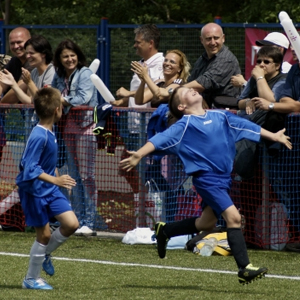 In the August 11, 2016, issue of the Journal of Pediatric, Maternal & Family Health is a published case series showing chiropractic helping four children suffering from autistic behavioral symptoms.
In the August 11, 2016, issue of the Journal of Pediatric, Maternal & Family Health is a published case series showing chiropractic helping four children suffering from autistic behavioral symptoms.
The authors of this study explain that the vagus nerve is a major controlling pathway for the parasympathetic nerve system. It is the parasympathetic system that has been shown to have a broad effect over autism-like behaviors and problems. This study looks at three children to see if correcting subluxations affecting the vagus nerve can have a positive effect on children suffering with autism behaviors.
The first child was a 7-year-old boy with a variety of autism related symptoms who was diagnosed with high functioning autism. After eight chiropractic visits, it was reported by his mother that her son seemed to have a decrease in looks of confusion and an increase in talking. Additionally, his mother also reported a decrease in bed-wetting and a decrease in response to food allergies, as well as being less picky in food choices. His mother also noted that her son won the most improved student award, to which she commented, “I cried, because I just never expected him to win an award like this.”
The second patient was a 5-year-old girl also diagnosed with high functioning autism. In this case, her mother reported a decrease in constipation as well as improvement in auditory and processing skills. The girl was given an “Autism Treatment Evaluation Checklist” test after four months of chiropractic care. This test showed that the girl had improved in all four areas tested, which include speech/language communication, sociability, sensory/cognitive awareness, and health/physical/behavior.
The third patient was a 4-year-old boy also with high functioning autism, who, according to his father, was better able to throw a baseball after chiropractic. It was also reported that the boy showed improvement in initiating conversations with adults and children at his school, and had improved eye contact. These improvements allowed him to begin to participate in after-school activities.
The fourth patient was a 4-year-old boy suffering with oculomotor apraxia. The authors described this condition by stating, “Oculomotor apraxia is a condition in which the child must turn their heads in order to follow their eyes, which causes a clumsy gait and difficulty in learning motor skills.” The boy also suffered with seizures and motor skill delays. After chiropractic care, the child was better able to run. He also showed improvement in his endurance, being able to walk at an aquarium for 5 hours. Additionally, it was reported that the boy was able to nap better, had less moody outbursts, and less apprehension.
In their conclusion, the authors explained chiropractic’s role in helping these children by stating, “The social engagement system controlled by the vagus nerve has significant potential ramifications for a child on the autistic spectrum or with other neurodevelopmental issues. As seen in the four above cases, each child showed significant behavioral improvements, which may be in part due to activation of the vagus nerve, thereby activating the social engagement portion of that nerve.”
